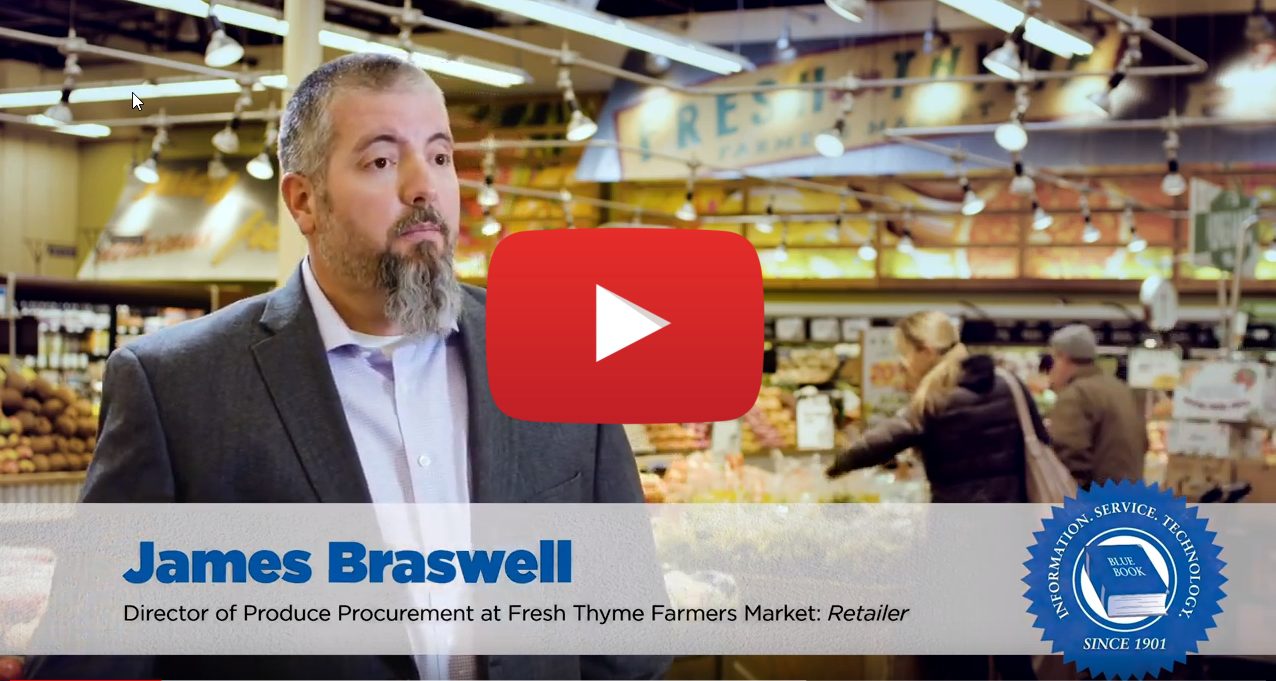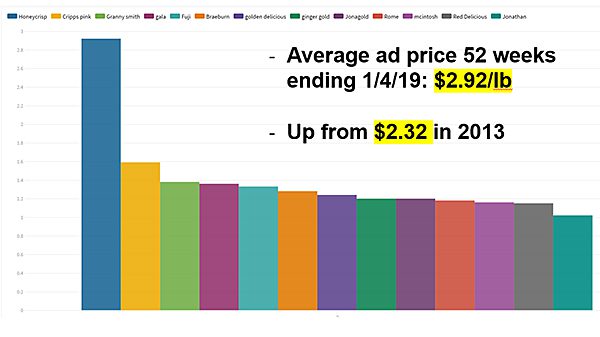GRAND JUNCTION, CO—Did Honeycrisp peak?
I’ve asked myself this question several times over the past few years, thinking that surely now that supplies have ramped up as much as they have. Fresh Honeycrisp holdings have increased 103% over the past five years, according to the latest report from the US Apple Association.
During a presentation to the Western Colorado Horticultural Society on Jan. 16, I gave growers my honest opinion on Honeycrisp’s future.
And I think the future is bright.
As much as I would have thought Honeycrisp demand, from retail and consumers, would have cooled off, it’s hotter than ever.
Honeycrisp has become the standard by which all others are measured.
So many new apple varieties have come to market over the past few years. The apple aisle is crowded. But, Honeycrisp is riding the wave of a perfect storm of a great name, high demand and a proven track record in promotions.
Retailers must ask themselves, is this as good as Honeycrisp? And, many times, it tastes as good as – or better than – Honeycrisp.
BUT WILL IT SELL AS WELL?
That’s the sticking point.
These two visuals from my presentation tell the story better than any of my words ever could.
The first, below, is the average number of ads per week by variety from the U.S. Department of Agriculture’s Retail Report. This report does have a flaw, however, in that it doesn’t collect data on managed varieties like Jazz, Envy, Opal and the like. But still, the Honeycrisp share of the pie compared to other varieties is hard to deny.
This chart is interactive. Either click on the chart or grab the little blue circle at the bottom to toggle back and forth between 2013 and 2018.
From the first week of January 2018 to the first week of January 2019, Honeycrisp accounted for 27% of all apple ads. That’s up from 7% of all ads in 2013.
Take a look at the other varieties. Gala increased. Red delicious decreased – that story’s been told, over and over – including by yours truly.
But what about the other players? Rome fell (see what I did there?) to a point that it’s not even worth measuring. Golden delicious dropped from 10% to 3%. Braeburn dropped from 7% to 2%.
But the more compelling argument for Honeycrisp’s continued dominance is that the average advertised price is still hovering around $3 a pound. In the 52 weeks ending January 5, 2019, it was $2.92 a pound. That’s up from $2.32 a pound in 2013.
Honeycrisp is a sure thing for retailers, and the frequency of promotion proves it.
New and exciting apple varieties are a great point of differentiation, but they’ll have to elbow their way in around other legacy varieties, not Honeycrisp.



